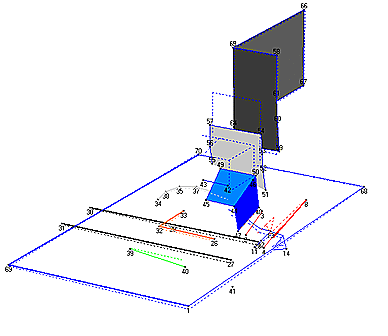Servo Control
Response Dynamics engineers work closely with in-house engineering teams to provide critical vibration consulting services to improve the performance of many motion control devices such as autofocus systems and X-Y stages as well as more complex, highly coupled gantry stages. These improvements ultimately increase the throughput capabilities of the system.
We are able to perform the standard time domain analysis of step response performance as well as frequency domain analysis of the system transfer function. Frequency analysis of both the closed-loop and open-loop transfer functions allows us to better determine the cause of any performance limiting issues that are present in a system.

Resonance Shift with Structural Modifications

Unintended Mechanical Feedback from Unwanted Mode
In many devices with feedback control, such as X-Y stages, throughput performance is limited by vibration modes of the system with natural frequencies outside of the desired system bandwidth. These vibration modes limit the magnitude of the feedback gains thereby reducing the system bandwidth and speed capabilities. Active feedback and feed forward systems sometimes do not work as expected due to a typo in programming or a subtle yet important mechanical issue. We can use the system response to make the deformation shapes visible so that we can narrow down and deduce the cause of the performance problem. The structural dynamics are part of the electro-mechanical system and are often overlooked in the initial troubleshooting by our clients.
We often perform Dynamic Testing, Modal Analysis testing, along with closed loop controller analysis, to identify the system dynamics that are limiting performance. We may also perform ODS testing with the system in a marginally stable, or unstable state to make visible the deformations taking place during instability. We then explain to the team why this mode is reducing gain and phase margin, what mechanical elements are critical and recommend mechanical changes and/or control loop changes to improve system performance. Those changes may include control loop parameter changes, sensor/mounting changes, structural modifications, and a Damping Treatment Design

Many of our clients are accomplished control system engineers and we have helped them push the performance limits of their system by providing insight into elusive and frustrating structural modes that limit performance and often lead to less than ideal fixes such as the use of notch filters and sensitive gain settings that must be individually tweaked on each system. We identify the problem dynamics and then present solution options in a way that is accessible to the engineering team.
